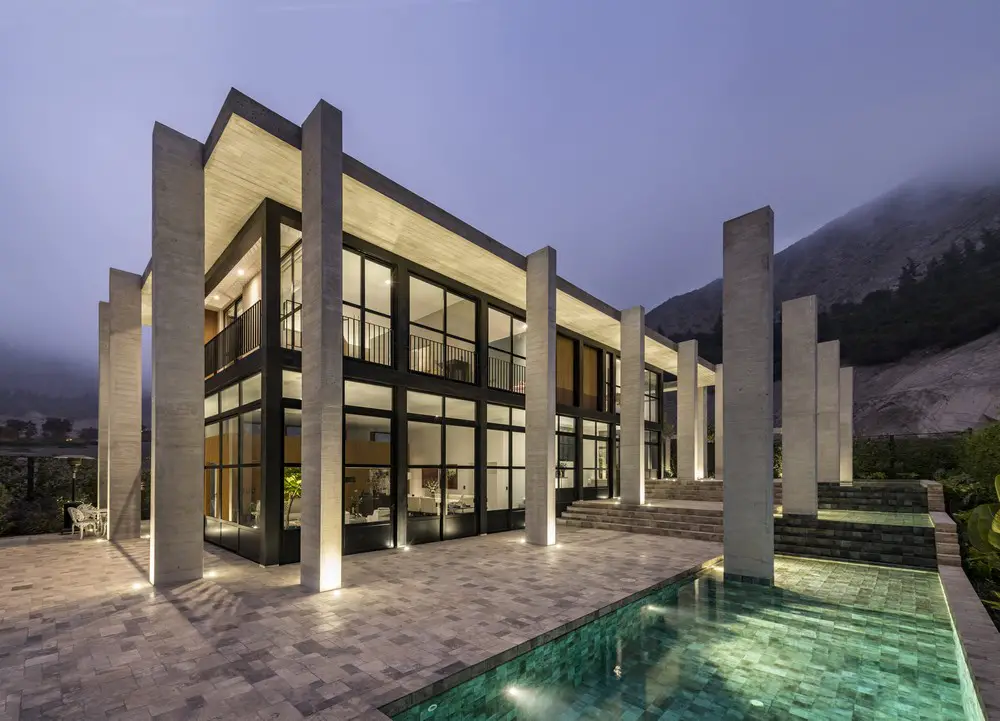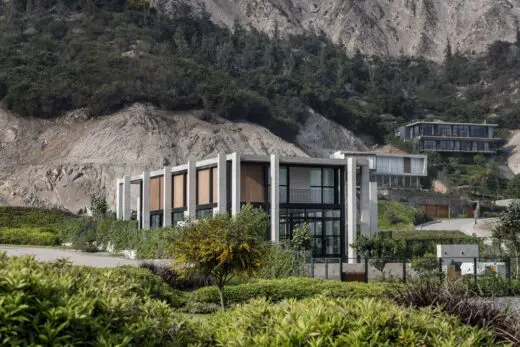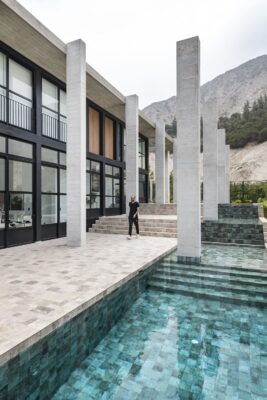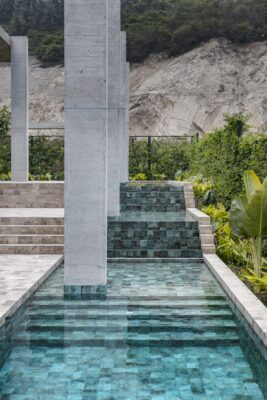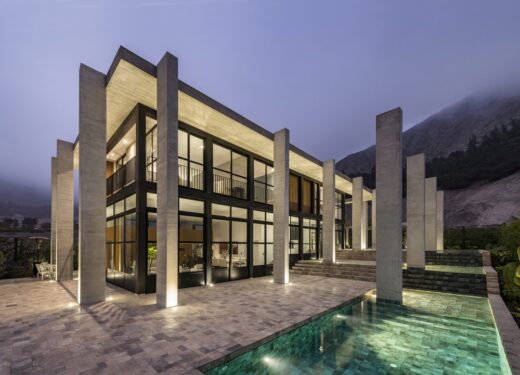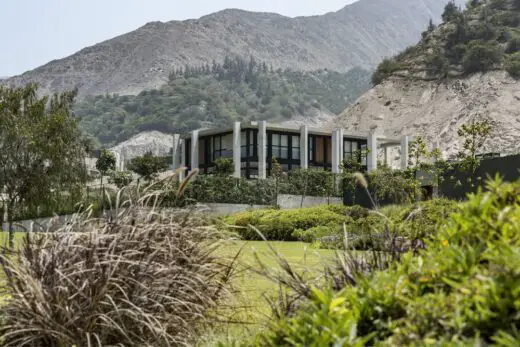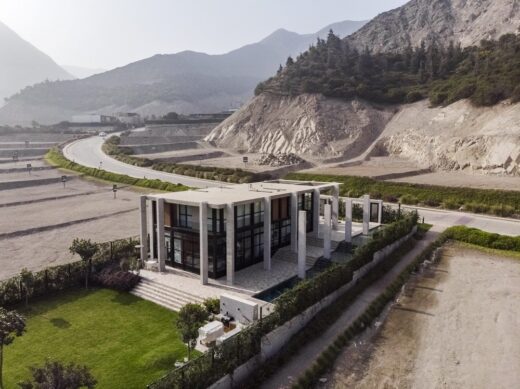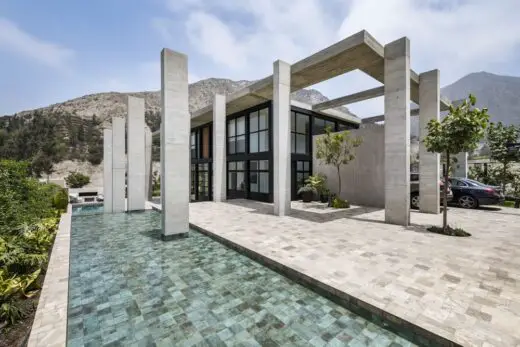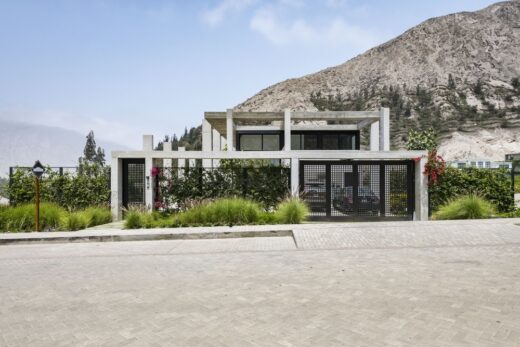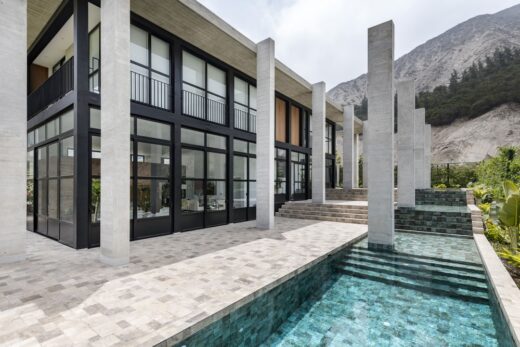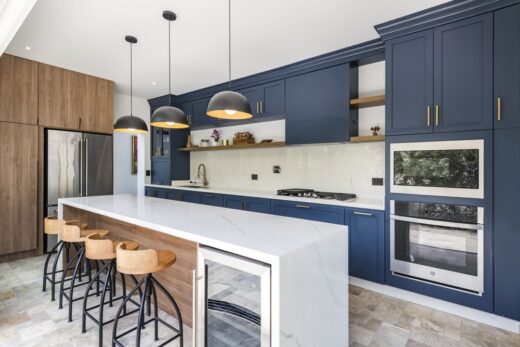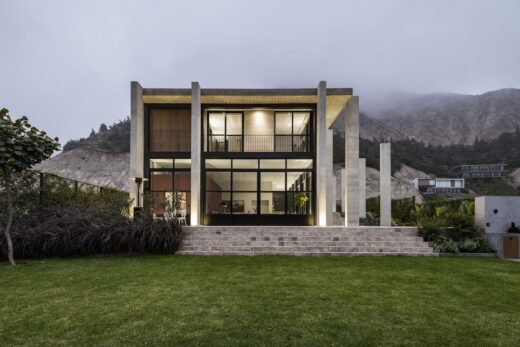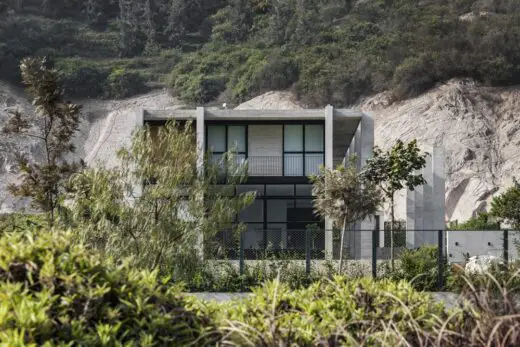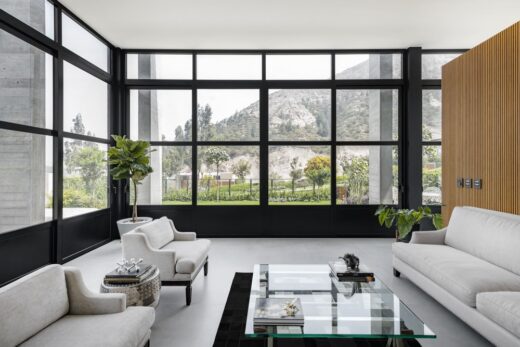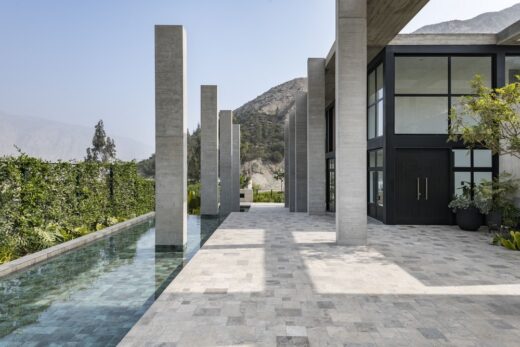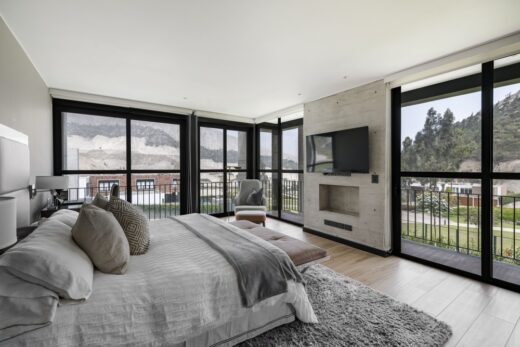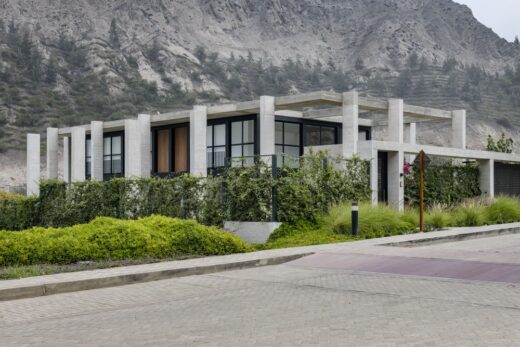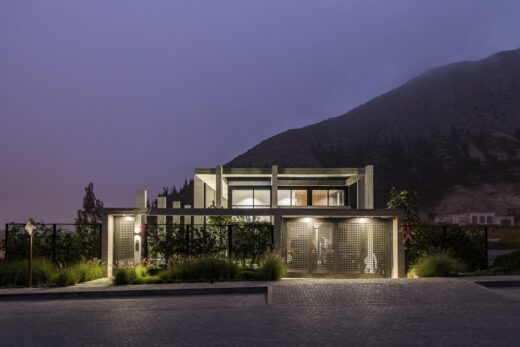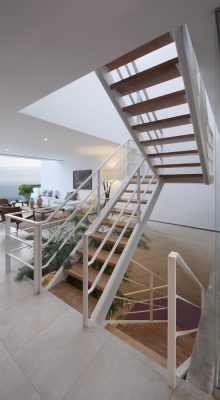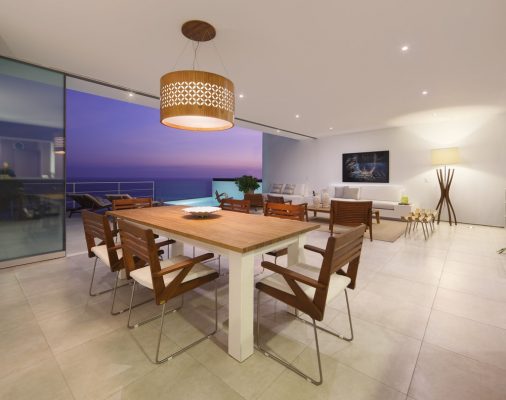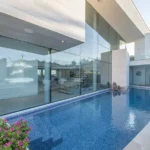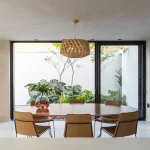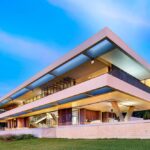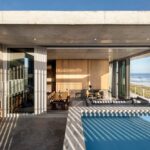Casa Tejona Lima, New Cerro Azul home design, Modern Peruvian property photos, Architect
Casa Tejona in Lima: Peru Residence
Contemporary Peruvian Residence, South America design by Arq. Martin Dulanto Sangalli
post updated 24 June 2025
Design: Arq. Martin Dulanto Sangalli
Location: lot 1, block D3, La Quebrada de Cieneguilla condominium, district of Cieneguilla, Lima, Peru
Photos: Renzo Rebagliati
9 Oct 2022
Casa Tejona, Peru
The project will be built on a 1,035.99 m2 plot of land located in lot 1, block D3 of the La Quebrada de Cieneguilla condominium, in the district of Cieneguilla, Province of Lima and Department of Lima.
Project Conception
The Casa Tejona project is conceived with the premise of minimizing its impact on the environment, seeking to link all its spaces with the surrounding nature. It seeks to generate the atmosphere of a temporary temple taken over by vegetation. A temple that worships life, as the daily activities of those who live there take place. And finally, a specific treatment has been sought for each area of the architectural program, which results in a specific and different character for each of the parts.
The project itself is a reinforced concrete exoskeleton. Which is nothing more than a double-height table supported by a peptide ambulatory around it. That inside it contains a large reticulated and glazed box. Box that contains the main spaces of the program and allows to contemplate the exterior. And this, in turn, contains other loose boxes inside, with an opaque character, for containing the most intimate and private programs.
The exoskeleton supports the house at a structural level, creates a pre-filter between inside and outside, and is an interstitial and transitional space. A link between nature and architecture. As well as, an eave prior to the glazed facades of the box that lies inside.
The glazed box contains the served spaces that want to enjoy the view to the outside. In turn, these spaces are protected from the elements by the same crystals. Enclosures that can be opened or closed as needed.
The opaque boxes, smaller and distributed within the glass parallelepiped, contain the server spaces. Boxes strategically distributed between the spaces served and that in contrast to these, present a more closed character, and with coatings extracted from nature.
The project has the following environments:
1. Basement: Staircase that goes up to the first level, service corridor, skylight, storage room and service bathroom. In addition, at this level there are cisterns (domestic and irrigation water), and a machine room.
2. First level floor: Entrance, parking, storage, hall, corridor, staircase that goes up to the second level, study, guest bathroom, games room with closet and guest bathroom, living room, dining room, kitchen, patio 1, patio 2, patio 3, pool and terrace.
3. Second level floor: Staircase coming from the first level, master bedroom with 2 walk in closets and main bathroom, bedroom 1 with closet and bathroom 1, bedroom 2 with closet and bathroom 2 and living room.
Location
This project is located respecting the natural topographic section of the land. For this, 4 platforms have been designed. In 3 of which the house perches. The house since its entry is perceived in a lower height than it really has. But as one advances and descends, until the lower platform, which is a large garden, where it is intended to have a landscape treatment of unevenness and trees, the first level of the house gains height from floor to ceiling, making the area social, which perches on the penultimate platform and looks directly at the aforementioned garden, has a height and a half with respect to the other spaces.
It should be noted that the terraced location of the project, by following the natural section of the lot, does not alter or harm its connection with the adjoining lots. No containment of more than 1.20 m in height, nor large fills or embankments, which obstruct the development of possible neighboring projects, are generated.
The side facade of the house that is after the withdrawal of 2.50 ml required in the regulations on the second level is completely closed to the neighbor and there is no record of its lot.
Facades
From the lot to the condominium: It is a sober facade, which respects what is designated in the La Quebrada Condominium regulations. It has in more than 60%, live fence. Which is made up of a stone-plated low wall and a galvanized iron fence finished in green, with climbing plants that cover it. The other 40% are two doors, the pedestrian entrance and the vehicular entrance. Both are galvanized iron lattice bars finished in dark gray from the color palette allowed by the condominium.
Of the building: Towards its four fronts, the house itself has a colonnade that circumscribes a large roof. This in the project has been referred to as the exoskeleton. In a second instance there is a large painted box that makes up the two levels of the house. The enclosures of this reticulated box are either glazed (with a view of the interior garden of the project), or wooden tongue-and-groove (they prevent registration of the neighboring property).
Withdrawals
The project complies with all the withdrawals stipulated by the regulations of the La Quebrada Condominium. Towards the front, 3.00 ml have been left, and the construction on the sides does not touch the minimum withdrawals of 2.50 ml. On the other hand, the second level of the building has no record of the adjoining lot.
Finishes
In the basement of the house, there are the following finishes. A) Faced concrete walls. B) Walls plastered and painted white. C) Ceramic veneered walls to be defined.
On the first level of the house, the interior walls have 4 different finishes: A) Plasterboard and painted. B) Faced concrete. C) Covered in wood and D) Covered in Ashlar.
In the second level
The exterior partitions and windows are made of tempered, transparent and colorless glass. The railings are made of painted galvanized iron. All windows and partitions have black anodized aluminum carpentry. The interior doors are against placadas and painted or against placadas and veneered in wood.
The floors on the first level, inside the delimitation of the aforementioned glass box, are made of ashlar. While the exterior floors are cement tiles. On the second level, the floors of all rooms are covered in ashlar.
The pool is lined with pepelmas.
It is worth mentioning that the concrete columns and beams that make up the aforementioned “glazed box” are painted.
The electrical installations are built-in type, as well as telephones, intercoms and Cable TV. No elevated tank required.
Ventilation and lighting of specific environments
a. Bath Service
This environment is illuminated and ventilated through a 20 cm high window. that goes to the full width of this space, that is, 2.00 ML. This window overlooks the skylight. Space that does not have a roof and that allows the bathroom to meet the regulated ventilation and lighting needs.
b. Guest bathroom
The guest bathroom is artificially lighted and ventilated. Thanks to a mechanical extractor built into the wall and connected to a piped path that goes through the floor, it reaches the outside, it is ventilated. This extractor injects the air, precisely to the passage between the building and the adjoining lot, in the withdrawal required by the regulations of the La Quebrada Condominium.
c. Bedroom bathrooms
This point refers to all those bathrooms inside the bedrooms of the house. Those that are ventilated and illuminated through the light ceiling that covers them. As can be seen in the cuts, the bathrooms have concrete joists that are offset from the ceiling level and allow the bathrooms to be ventilated from the lateral void they leave. And they illuminate the environments through the blued tempered glass cover with 3M UV protection sheet, which is on top.
d. Study and game room on the first level
These two environments are illuminated and ventilated through openings that allow air to circulate and capture sunlight during the day in the space between them and the end of the exoskeleton mentioned above.
Construction System
Reinforced concrete plates were combined with porticos (beams and columns) of reinforced concrete and brick walls. The structures of this project were developed by engineer Jorge Avendaño.
Casa Tejona in Lima, Peru – Property Information
Architect: Martin Dulanto Sangalli
Project Manager: Miguel Gutierrez
Collaborators: Micaela Elliot, Adriana Olivares, Luis Navarrete
Location: La Quebrada Condominium, Cieneguilla. Lima – Peru.
Structural Engineer: Jorge Avendaño.
Interior Designer: Giselle Sersen
Lot area: 1035. 99 sqm
Basement roofed area: 47.88 sqm
Rooftop area first level: 132.54 sqm
Rooftop area second level 169.07 sqm
Free Area: 903.45 sqm (87.21%)
Year of construction: 2022
Photographs: Renzo Rebagliati
Casa Tejona in Lima, Contemporary Peru Residence images / information received from Peruvian architect Martin Dulanto Sangalli
Another Martin Dulanto Sangalli house on e-architect
Location: Cerro Azul, Lima, Peru, South America
New Peru Architecture
Contemporary Peru Architecture
Peruvian Architecture Designs – chronological list
Lima Architects Offices – architecture studios contact details listings on e-architect
Casa Topo, Cieneguilla, Lima
Design: Arq. Martin Dulanto Sangalli
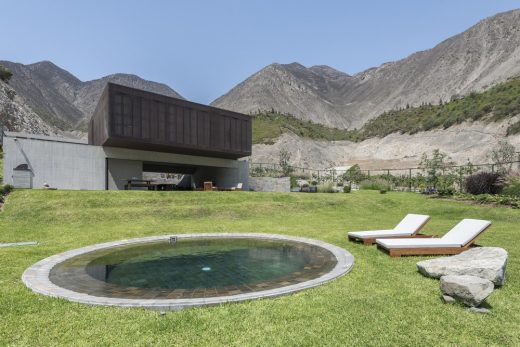
photograph : Juan Solano
New Property in Cieneguilla
Casa Lapa, Pucusana, Lima, Perú
Design: Arq. Martin Dulanto Sangalli
photo : Juan Solano
Casa Lapa, Lima
Lima Properties
P2 House Poseidon, Pucusana
Design: domenack arquitectos
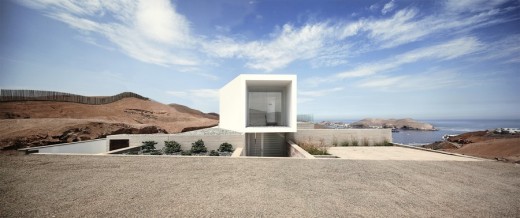
photograph : Juan Solano
New Home in Pucusana
Comments / photos for the Ave House in Lima property design by Arq. Martin Dulanto Sangalli page welcome
Website: Architect Martín Dulanto

